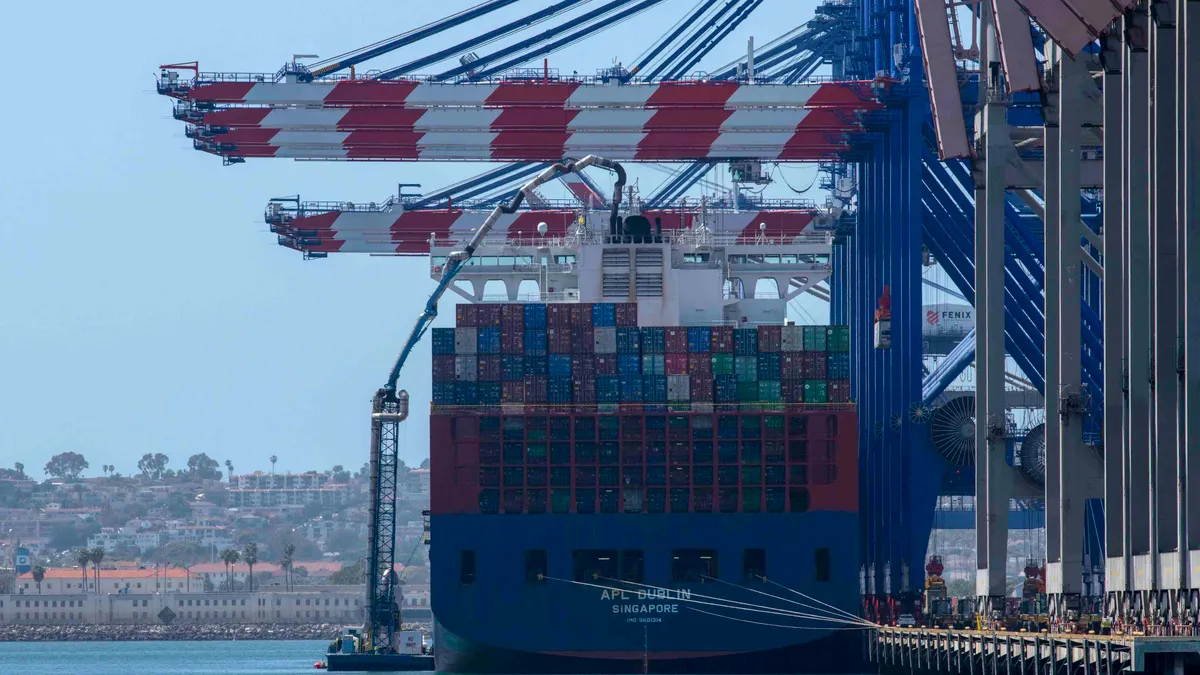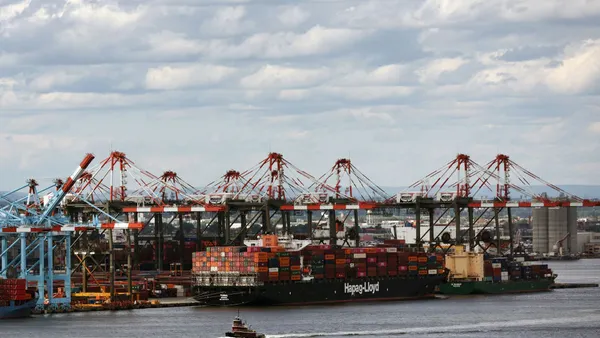LOS ANGELES — Rail issues, rising container dwell times and a backlog of ships in China pose threats to continuing supply chain improvements at the Port of Los Angeles. Still, port and union leaders expressed confidence on Tuesday in their ability to handle a potential surge.
Cargo volumes were already slightly up in March, with 958,674 TEUs crossing the piers. That's a slight increase from last year, and the port ended Q1 with volumes up 3.5% YoY.
The increase in cargo was unexpected, coming off a strong March 2021, Port of Los Angeles Executive Director Gene Seroka said during his virtual monthly briefing. He attributed the rise in volumes to better fluidity on the docks and improved labor availability with fewer dockworkers out with COVID-19.
"We've been working at this for a long time, and it's paying off, with fewer vessels waiting in the queue and more velocity on the terminals," he said, later adding: "Past performance does not guarantee future results. We'll be working hard at this every day."
About 495,000 TEUs of imports moved through the Los Angeles port last month, Seroka reported. The port handled nearly 112,000 TEUs of exports, a 9% drop YoY and the 37th decline in the past 41 months.
"The 30-day rolling number on cargo output from the port into the interior of the United States continues to be at elevated levels," Seroka said. "Cargo density on the docks is not bad, although it's [crept] up over the last month."
The Los Angeles port has been working for months to encourage shippers to increase their usage of its on-dock rail. Those efforts paid off with a six-fold increase in rail volume in March, Seroka reported.
But congestion further inland is disrupting rail operations at the port, leading to longer dwell times and contributing to a rise in on-dock cargo density. Many shippers had shifted their cargo to other ports or to truck after railroads suspended some inland service last year.
Around 20,000 containers dwelled nine days or longer in March, up from 8,800 in the previous month.
"We're working diligently with C-suite partners and the administration in Washington to reposition rail cars and get containers into the U.S. interior," Seroka said.
Shippers and analysts have also warned that lockdowns in China and and upcoming labor negotiations at West Coast ports could exacerbate congestion just as companies replenish inventories. But Seroka remained confident in the port's ability to handle potential disruption.
Hundreds of ships waiting for cargo at ports in China will "more than likely" lead to short-term lulls in cargo flow, followed by a quick bounce-back in purchase orders, Seroka said.
"I don't see this getting out of control at this point," he said.
Seroka also noted that bargaining with ILWU is progressing ahead of the union's contract expiration July 1. Willie Adams, ILWU International President, and Frank Ponce De Leon, ILWU Coast Committeeman, joined the port executive in a pre-recorded, waterside interview, which rolled during the briefing.
Both union leaders praised their membership, more than 40 of whom have died of COVID-19 during the pandemic. They encouraged onlookers concerned about the bargaining to let the negotiations unfold.
"Everybody out there, just tone it down and stop all the rhetoric," Adams said. "We have been negotiating — the ILWU and our employers — since the 1930s. There's adults on both sides of the table. It's called the process."















